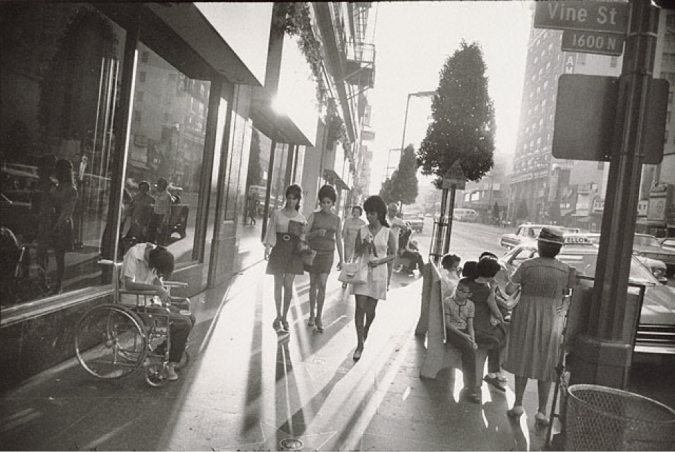At the Metropolitan’s hosting of the SFMOMA retrospective exhibition Garry Winogrand (on view June 27 to September 21, 2014), the photographer’s quotations sprinkled through the galleries convey his annoyingly literal way of answering questions about his work. For example: Why did he photograph? To see “how the thing looks photographed.” Art historians might want a meatier explanation, but Winogrand stubbornly maintained his answers, with evasions that can sometimes seem facetious. About his complex and undeniably incisive photograph Los Angeles, 1969, he claimed, “It’s the light. Look at the light!”

But wandering through the rooms of the exhibition eases any frustration with Winogrand. His photographs are masterful. They are slippery, unsettling, hilarious documents of the joys, pretensions, and tragedies of mid-century American life. While Winogrand is never quite cruel to his subjects, he is definitely unsparing. The loneliness of a new New Yorker, the sensuality of an uptown shopper, the strain of a tight swimsuit—even, in a winking move by the museum, the lasciviousness of a Met Centennial Ball attendee—all is documented.








